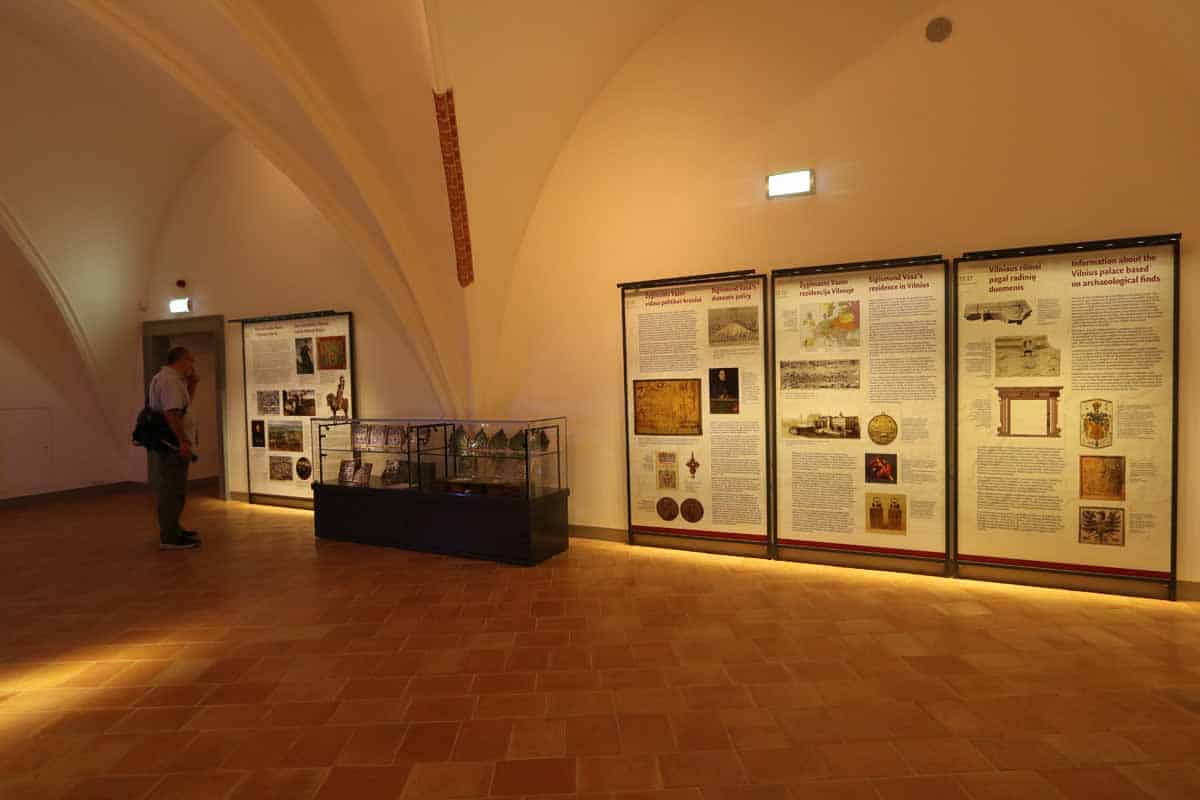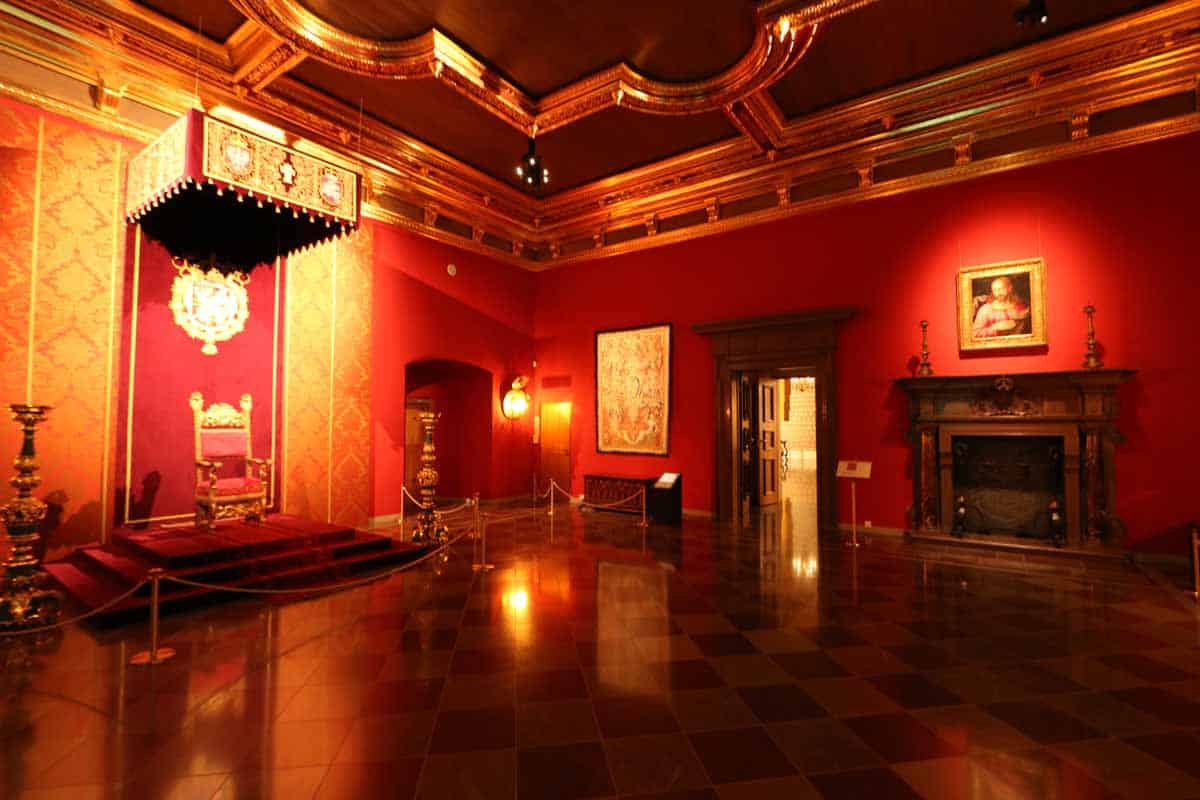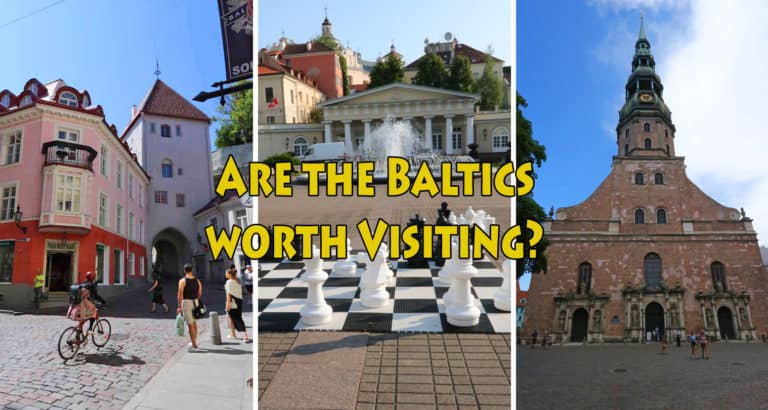Why you should visit the Palace of the Grand Dukes of Lithuania
I thought this post should be written, principally because we almost didn’t visit the Palace of the Grand Dukes of Lithuania at all. It would have been a shame because the Palace ended up being our highlight attraction in Vilnius (if not the entire Baltics).
We had gone to the ticket office of the Palace and everything was badly explained. It sounded like you needed to take a tour (we always prefer not to take tours, we always prefer seeing a site independently). The pricing structure was complicated, with 4 different prices based on “Routes” chosen. In a country where people speak a good level of English, the lady at the Palace ticket office barely spoke intelligible English.
Confused, we actually held off on visiting that first day, deciding to study the complicated brochure when we got back to the hotel room (We stayed at the Ratonda Centrum Hotel on Gediminas Avenue. Recommended).
After doing some reading and looking up Trip Advisor reviews, we came back the next day and spent 3 enjoyable hours in the Palace of the Grand Dukes of Lithuania.
I’m writing this in the hope that it clarifies everything you need to know. It’s really not complicated but you should know how a visit to the palace really works, what the highlights are (so you can choose the proper “routes”) and I decode the pricing structure for you.
What is the Palace of the Grand Dukes of Lithuania?
The Palace that you see is a reconstruction of the original palace(s) that stood here dating back to the 15th century. It was reconstructed in 2002 and was completed in 2018.
The site has a long and complicated history. Initially, a wooden palace dating back to the 13th and 14th centuries was located here. In the 15th century a stone palace was built, part of a castle complex that included an upper castle (today, the Gediminas Tower is all the remains of the upper castle).
When initially built in the 15th Century, the Palace was the residence of the rulers of the Grand Duchy of Lithuania which was (at its height) a large state that included territory of what is now Latvia, Lithuania, Belarus, Poland, Ukraine, Moldova and Russia. The Kingdom would soon be part of the Polish – Lithuanian Commonwealth (1569 – 1795) and the Palace was the political, administrative and cultural centre of that Commonwealth.
In 1795 the Commonwealth was invaded by Russia and, in 1801, the original Palace was demolished.
When Lithuania finally achieved independence in 1991, plans were made to rebuild the palace. What you see today (completed in 2018) is the culmination of those plans.
How to visit the Palace of the Grand Dukes of Lithuania?
You can find ticket prices on the official website of the Palace.
Firstly, you don’t have to take a tour (ie. a guided tour). You can visit the Palace on your own without a guide. You can have a guide if you want (for an additional cost per group) but it is not required.
The Pricing talks of different routes and pricing (note: 2023 pricing and subject to change)
Route 1 – 5 Euros
Route 2 – 8 Euros
Route 3 – 2 Euros
Route 4 – 4 Euros
OR you can pay for all 4 Routes for a total of 12 Euros.
What you should know: The essential “routes” are 1 and 2. They should not be missed in my opinion.
Route 1 covers the history of Lithuania and it is very detailed. There is a lot of reading involved from boards with lots of pictograms. The location is mostly in the basement of the palace among archaeological excavations showing off the remains of the original palace. As I say, there is lots of reading and if you’re not interested in history or if you have kids with you then you might want to skip Route 1. But I found it fascinating and very well told (with signs in both Lithuanian and English). In fact, if you were thinking of going to National Museum of Lithuania (which is 5 minutes away) I would suggest that you don’t have to only because the Palace of the Grand Dukes of Lithuania covers it in much greater detail and does it better (note: further below I have a short version of Lithuania’s history for anyone interested).
Route 2 is the most popular part of the palace because it shows off Palace rooms, paintings, tapestries…The rooms have been beautifully reconstructed and you get to see lots of beauty (see the video below. Photos further below). Not much reading here, it’s all visual as you wander from room to room looking at all the beauty around you.
Route 3 covers weapons, armour, music and features a log cabin which (if I understand correctly) is a model of the first structure in this location in the 13th century. Honestly, unless you are really interested in weaponry and armour, it is not essential to the tour.
Route 4 is for a temporary exhibit. But we saw no signs of it anywhere.
Note: you can also take an elevator up to the top floor of the palace where there is a glass-enclosed room featuring 360 views of the city. Some of the best views in Vilnius. Included in whatever ticket you buy.
So what to do if buying your ticket? Route 2 (the rooms) is essential. If you’re interested in History, then you should definitely take route 1.
What to do:
Pay for Route 2 (8 Euros) if you want to just see all the beautiful rooms. That will most likely take you about 1 hour.
Pay the 12 Euros to see the whole museum if you want to see Route 2 AND see Route 1. It also allows you to see Route 3 which is the armoury. Altogether, you can spend up to 3 hours if choosing this option.
Really it should be that simple, the pricing structure in place makes no sense.
I recommend keeping it simple: Pay the 12 Euros to see everything. It’s worth it.
Note: don’t bother with audio guides or 3-D glasses. Saw reviews saying the audio guide was awful (“an English narrator with a strong Yorkshire accent more suited to a Tetley tea advert”). Really you don’t need it, the signage around the museum is excellent.
Some photos
For those interested in history of Lithuania
I was fascinated by the history presented in Route 1. There’s a LOT of reading and at a given point you might end up glazed-eyed. So I decided to add a very quick history lesson on Lithuania that I learned from the museum.
- The history of Lithuania starts with Mindaugas. In the early 13th century he consolidated various pagan Balt tribes into a state (the main reason to ally themselves against German Teutonic Knights who continuously threatened the region). Mindaugas converted to Christianity and was crowned as Lithuania’s first and only king in 1253.
- 10 years later, in 1263, Mindaugas and his family were murdered. Lithuania reverted to paganism but the state and its borders survived.
- Power changed hands constantly and there were always enemies: the German Teutonic Knights, The Golden Horde (Mongol/Turkic people), and Prussians.
- Gediminas was the next great ruler of Lithuania (official title: Grand Duke of Lithuania). He ruled from 1315 – 1341, founded Vilnius, and invited tradespeople from Hanseatic towns to build up the city. The Empire grew from the Baltic sea to the Black Sea.
- After the death of Gediminas in 1341, his 7 sons ruled. There were wars with the Teutonic Knights, the Polish, Mongols and the Grand Duchy of Moscow.
- Lithuania and Poland became closer in the late 1300’s, mostly to counter the Teutonic Knights and the increasingly powerful Grand Duchy of Moscow. Lithuania converted to Catholicism in 1387.
- In 1569, Lithuania and Poland formed a new state called the Polish – Lithuanian Commonwealth. Although independent in many ways, the Union was designed to have a common foreign policy, customs and currency.
- In the mid-1600’s the Commonwealth waged war with Sweden and Russian. In the early 1700’s plague broke out. These factors made the Commonwealth weaker and more susceptible to the Russian Empire which was growing in force.
- In 1795 Lithuania was taken over by Russia.
- Russians ruled Lithuania from 1795 to 1918. There were many revolts against Russian rule and there was hope in 1812 when the French under Napoleon briefly liberated the country.
- In 1915 (WWI) Germany occupied Lithuania.
- Lithuania became “independent” in 1918 but was under German occupation. Soviet Red Army marched into the country in 1919 which started the first of 3 Lithuanian wars of Independence. The Soviets were expelled and signed a peace deal but there was further fighting with Poland. Lithuania never fully enjoyed independence.
- In 1941 the Nazis attacked Lithuania and exterminated most of its Jewish population. The Germans occupied Lithuania from 1941-1944.
- When momentum in the war changed, the Soviets took over Lithuania. Their rule would last from 1944 to 1990.
- In 1991 Lithuania finally achieved independence.
That’s a very short and abridged version of Lithuania’s complex history.
The long and the short of it is that you should visit the Palace of the Grand Dukes of Lithuania. There’s lots of history and lots of beauty as well and it is the perfect place to learn more about Lithuania.
Related: What’s Vilnius (Lithuania) like? Impressions, experiences and lots of photos
Related: Air Baltic Review
Related: Are the Baltics worth Visiting? (and ranking the Baltic capitals…)
















Leave a Reply